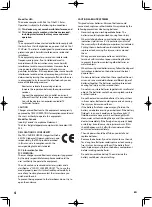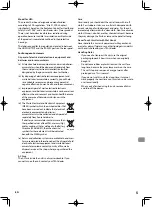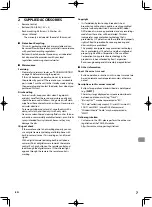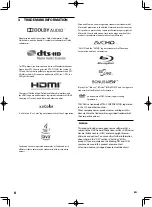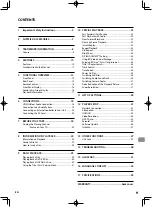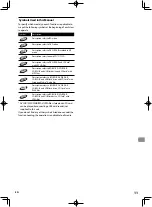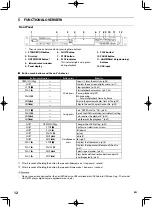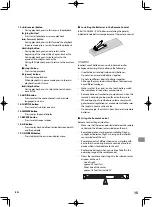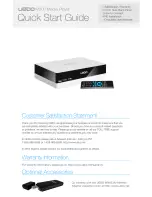
EN
5
Model for USA
This product has been designed and manufactured
according to FDA regulations “title 21, CFR, chapter 1,
subchapter J, based on the Radiation Control for Health and
Safety Act of 1968”, and is classified as class
I
laser product.
There is not hazardous invisible laser radiation during
operation because invisible laser radiation emitted inside
of the product is completely confined in the protective
housings.
The label required for this regulation is located in between
the HDMI OUTPUT and the RS-232C ports on the rear panel.
For European Customers
Disposal of electrical and electronic equipment and
batteries and/or accumulators
(a) All electrical/electronic equipment and waste batteries/
accumulators should be disposed of separately from
the municipal waste stream via collection facilities
designated by the government or local authorities.
(b) By disposing of electrical/electronic equipment and
waste batteries/accumulators correctly, you will help
save valuable resources and prevent any potential
negative effects on human health and the environment.
(c) Improper disposal of waste electrical/electronic
equipment and batteries/accumulators can have serious
effects on the environment and human health because
of the presence of hazardous substances in the
equipment.
(d) The Waste Electrical and Electronic Equipment
(WEEE) symbols, which show wheeled bins that
have been crossed out, indicate that electrical/
electronic equipment and batteries/
accumulators must be collected and disposed of
separately from household waste.
If a battery or accumulator contains more than
the specified values of lead (Pb), mercury (Hg),
and/or cadmium (Cd) as defined in the Battery
Directive (2006/66/EC), then the chemical
symbols for those elements will be indicated
beneath the WEEE symbol.
(e) Return and collection systems are available to end users.
For more detailed information about the disposal of old
electrical/ electronic equipment and waste batteries/
accumulators, please contact your city office, waste
disposal service or the shop where you purchased the
equipment.
AC Fuse
The AC fuse inside the unit is not userserviceable. If you
cannot turn on the unit, contact your TEAC dealer.
Care
Occasionally you should dust the unit all over with a soft
cloth. For stubborn stains, use a soft cloth dampened with
a weak solution of mild detergent and water. Dry the unit
immediately afterward with a clean cloth. Don’t use abrasive
cloths, thinners, alcohol, or other chemical solvents, because
they may damage the finish or remove the panel lettering.
Never Touch this Unit with Wet Hands
Never handle this unit or its power cord while your hands
are wet or damp. If water or any other liquid gets inside this
unit, have it checked by your TEAC dealer.
Handling Notes
•
If you need to transport this unit, use the original
packaging to pack it how it was when you originally
bought it.
•
Do not leave rubber or plastic items on this unit for a
long time, because they may leave marks on the case.
•
This unit’s top and rear panels may get warm after
prolonged use. This is normal.
•
If you do not use this unit for a long time, it may not
work properly the next time you turn it on, so be sure to
use it occasionally.
•
When you’ve finished using this unit, remove all discs
and turn off the power.
Pb, Hg, Cd




